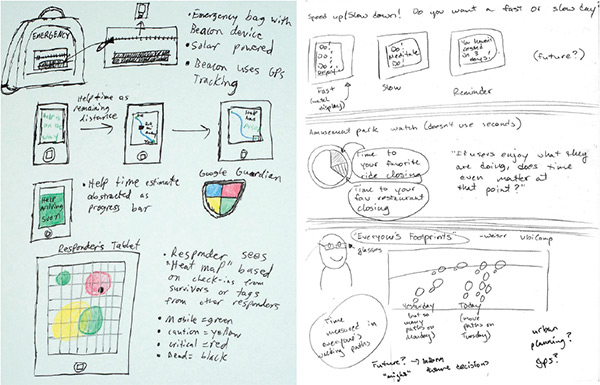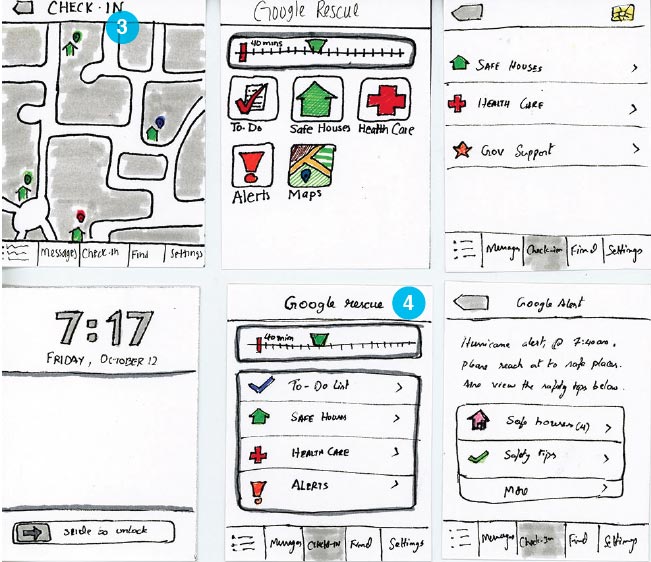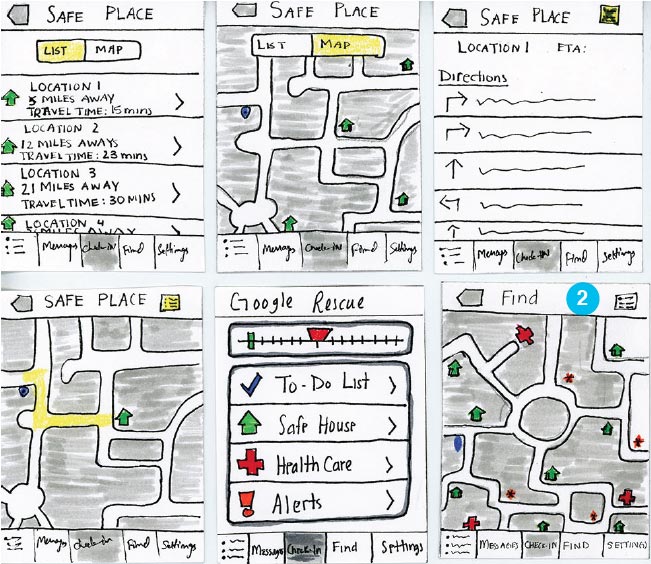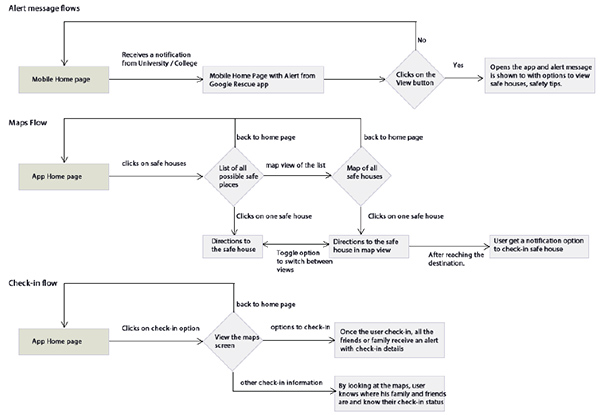Overview
In a natural disaster (e.g., tornado, hurricane), the victims' main concern is
both their survival and that of their loved ones. Additionally, the needs of
disaster victims change depending on the context of not just where they
are, but when they are in the timeline of the disaster. Our focus is on supporting
the victims in the time directly before (about 24-48 hours), during,
and after (about 24-48 hours) a natural disaster. The natural disaster serves
as an anchor point that this timeline is centered around.

Narrowing our problem space to 12 hrs before and after the disaster.
Before a natural disaster strikes, people must arm themselves with information
and make preparations. This can include making communications
plans for themselves and their loved ones, learning about their surroundings
and identifying evacuation routes and 'safe places' to stay in
the event of a disaster During this phase, the victims must take as many precautions as they can to keep themselves and their loved onessafe when the disaster hits.
The length of this phase is unpredictable, as victims may have a long time
to prepare (for example, if they start setting up communications plans in
the bad weather off-season) or not much time at all (if they don't start
any preparations until they receive warnings about the weather). Every
precaution victims take before a disaster, no matter how small or how late,
increases their chances of survival. For example, an otherwise unprepared
victim can still learn right before a tornado hits that huddling and covering
one's head can better keep vital areas protected from flying debris.
Design Research
We performed an interview with a Red Cross volunteer to learn more about
experiences in a natural disaster situation. One of the big points we picked
up is that unpaid volunteers have a very limited amount of time and can
sometimes be unable (or unwilling) to take on extra work, even when it is
needed.
Our secondary research included a literature review and a case study review
of Google Crisis Response. We determined the following:
- During especially severe hurricanes, many injuries or deaths are
caused by an inability to evacuate in time.
- Victims likely need to check on others, including children, elderly individuals,
etc. during an emergency situation.
- Universities post a large amount of disaster safety information for students,
particularly out-of-town students
Ideation
We ideated on ways in which we could apply
Google services in a timely manner to assist victims and first responders
alike. We discovered that Google already has a system in place for first responders
incorporating Maps, Google Sites, and Google Docs into a comprehensive
system for collaboration: Google Crisis Response. This system
focuses on addressing the problem starting a few hours after the disaster.
However, we found that these resources were not provided to victims;
while there is no shortage of information available, it is scattered and
static, requiring that the users fetch the information themselves. We therefore
decided to emphasize helping victims prepare for, survive, and recover
from natural disasters using tools that complement Google Crisis
Response.

Initial sketches and approaches to redefining time, with a focus on shared experiences.

Paper prototypes for 'Google Rescue' app.

Screen flow for finding safe places using maps and turn-by-turn direction.

Task flow diagrams explaining the tasks: Alert message flow, Maps flow and Check-in flow.
 Narrowing our problem space to 12 hrs before and after the disaster.
Narrowing our problem space to 12 hrs before and after the disaster. Initial sketches and approaches to redefining time, with a focus on shared experiences.
Initial sketches and approaches to redefining time, with a focus on shared experiences. Paper prototypes for 'Google Rescue' app.
Paper prototypes for 'Google Rescue' app. Screen flow for finding safe places using maps and turn-by-turn direction.
Screen flow for finding safe places using maps and turn-by-turn direction. Task flow diagrams explaining the tasks: Alert message flow, Maps flow and Check-in flow.
Task flow diagrams explaining the tasks: Alert message flow, Maps flow and Check-in flow.